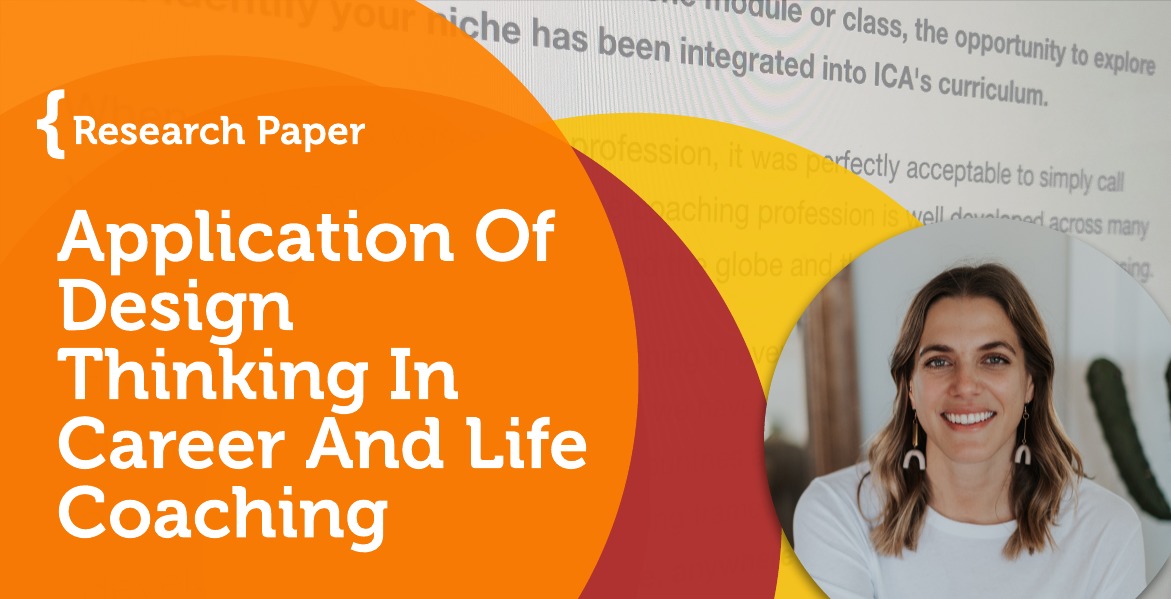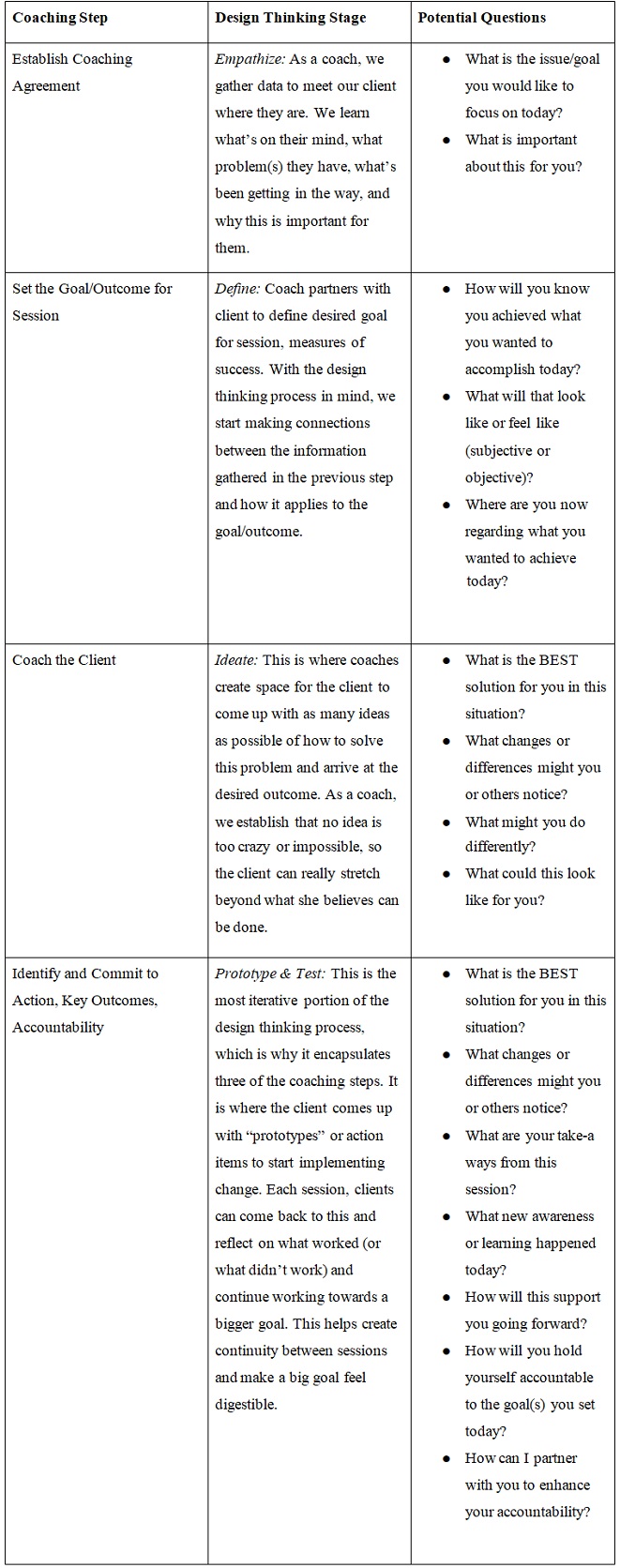 Research Paper By Natalia Tamburini
Research Paper By Natalia Tamburini
(Career Coach, UNITED STATES)
A well-designed life is a life that is regenerative—it is constantly creative, productive, changing, evolving, and there is always the possibility of surprise – Bill Burnett and Dave Evans, Designing Your Life: How to Build a Well-Lived Joyful Life
Overview
Like many people, I have believed that I had to choose one thing for my career and do that for the rest of my life. I believed I would have to choose that thing before I entered college, so I could major in it, and doing anything with my life besides that would mean failure. The truth is only 27% of college graduates end up working in the same field as their major (Burnett & Evans, p. X) and life presents us with much more flexibility and room to change than we like to believe.
In my current job in website and UX design, I have worked on projects in which we help organizations re-envision their path in the world by creating the space for them to explore what is possible and taking the first step. We use a process called Design Thinking and in this research paper, I want to explore design thinking and how its principles can be applied to career and life coaching to help our clients shift perspectives and reframe old beliefs.
What is Design Thinking?
Design thinking is a five-stage process rooted in empathy and hands-on work that aims to innovate and change how we approach every day and complex problems (IDEO). While the term was officially coined by IDEO’s CEO Tim Brown in the 1990s as a way to apply the creative process in a standardized method to design-related problems, the idea of learning by doing as an approach to innovation and design dates back to the early 1900s (group).
The Design Thinking Process
The design thinking process contains 5 stages and while they seem to follow a linear structure, the process is meant to be iterative and allows for the space to jump back and forth between steps to fit the problem at hand.
 Author/Copyright holder: Teo Yu Siang and Interaction Design Foundation. Copyright terms and license: CC BY-NC-SA 3.0
Author/Copyright holder: Teo Yu Siang and Interaction Design Foundation. Copyright terms and license: CC BY-NC-SA 3.0
A Deeper Look at the Process
Stage 1: Empathize
The main goal of this stage is to truly understand the problem at hand. In the design world, this is where you research to truly understand how your users think, feel, and act. Designers usually approach this by conducting interviews, observing their users, and discovering what people really need. This stage is purely a data-gathering stage in which designers seek out as much information as possible without analyzing it (this is done in the next stage).
Stage 2: Define
In Stage 2, designers take all the data gathered from stage 1, analyze it, and define concrete problems, and need to move forward. This is the stage where designers start to see patterns and connections between research they collected, and begin to draw out larger themes and issues from raw data.
Stage 3: Ideate
At this point, designers spend time thinking of possible solutions to the defined problems. In design thinking, no idea is too crazy or stupid to be considered. This is a space in which thinking outside of the box and pushing the limits of what is thought to be possible are welcomed and encouraged. The more ideas the better, the focus here is quantity, not quality. Designers take the time to throw out ideas, morph, combine, and create new paths and ways to solve a problem.
Stage 4 & 5: Prototype & Test
These stages go hand in hand because it is most likely where there will be a lot of back and forth. Prototyping means to create a preliminary model of a product and it is arguably the single-most-important piece of this process. It is important to allow the space to create prototypes that fail and be able to assess how and why they do or do not solve the problem at hand. During the testing stage, designers take their prototypes to users and ask questions such as, “Does this meet your needs?”, “Does this solve your problem?”. These two steps are iterated until the team either solve the problem or are satisfied with the product.
The key point I’d like to highlight about the design thinking process is that it is an open process, which means even after a product or solution is implemented, designers always have the option to go back to any step and begin again. This is why you see new versions of things like the iPhone or certain car models every year, designers go back through the stages to continuously create a better solution to certain problems.
Career and Life Coaching
Overview
In career and life coaching, we often hear a lot of clients say their goal is to create a plan for their [insert life path here]. Whether it’s a plan to move to a new city, change careers, or grow within their company, they are seeking a step-by-step process that gets them from point A to point B.
A common issue in this perspective is that the client is focusing solely on the outcome and seeing the journey simply as steps to arrive somewhere. The design thinking process is at its best a framework for thinking about problems. It focuses on creating space to digest and analyze data as well as explore wild approaches to a problem.
When we attach ourselves to an outcome, we can get stuck on a single path to that outcome. We can get stuck to stories that we believe have to be true, and miss out on opportunities that might show us a different path forward.
Design Thinking Process Application
The process of attaching ourselves to an outcome right away assumes that we know all the answers before even asking any questions (Burnett & Evans, p. 7), while design thinking urges us to think like a designer and “approach the problem with a beginner’s mind” (Burnett & Evans, p. 7).
Having a beginner’s mind is really about letting go of assumptions and beliefs and asking questions that may seem obvious, so obvious that we forget to ask them.
From there, we can implement the design thinking framework to create a coaching experience that is flexible and rooted in trial and error to help our clients truly understand what it is that they want and what is and is not working as they go, rather than creating a whole plan based on assumptions.
The table below outlines how the design thinking process can be applied to the 7 step coaching process:

Conclusion
I believe the design thinking process complements the coaching approach in a variety of ways. First, it creates a space to challenge assumptions and beliefs right off the bat by asking the client, “What do you really need/want?”. It also allows coaching to flow with a flexible structure that allows clients to revisit questions, create prototypes and act without the fear of failure, but a rather welcoming failure as a teacher, and leaves the process open so the client can focus on growth as a journey rather than one single destination.
References
Burnett, W., & Evans, D. J. (2020). Designing your life: How to build a well-lived, joyful life. New York: Alfred A. Knopf.
Gibbons, S. (2016, July 31). Design Thinking 101. Retrieved December 28, 2020, from https://www.nngroup.com/articles/design-thinking/
Miglino, M. (2020, October 02). How To Structure A Coaching Session. Retrieved December 29, 2020, from https://archive.coachcampus.com/resources/how-to-structure-a-coaching-session/
What is Design Thinking? (n.d.). Retrieved December 28, 2020, from https://www.interaction-design.org/literature/topics/design-thinking